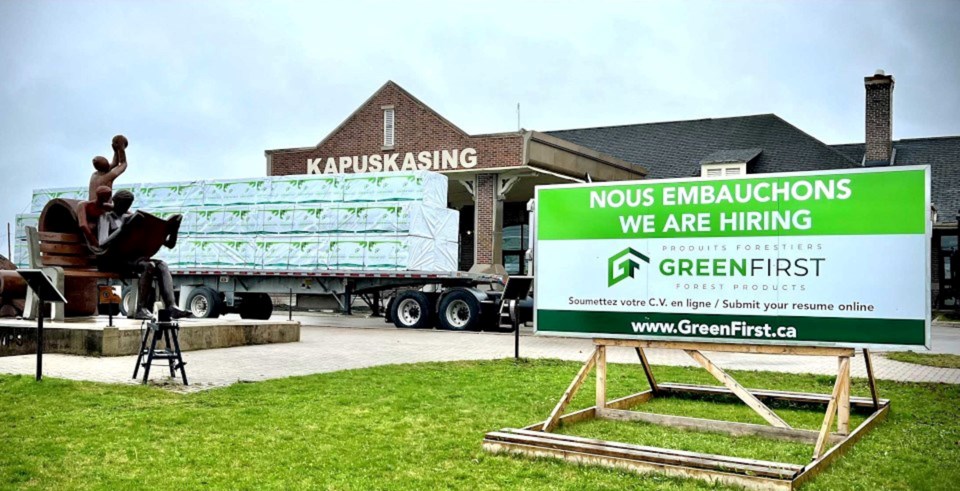The operators of Kapuskasing’s paper mill will have greater autonomy to chart its own future once its owner spins off the asset into a separate company later this year.
Toronto’s GreenFirst Forest Products decided last year it was going to split its lumber and paper mill entities into two distinct business lines, each led by separate management teams.
GreenFirst wants to focus on its core business as a “pure-play lumber producer," the company said in a July 2 news release.
For its newly minted Kap Paper subsidiary, this new arrangement should be finalized by the fourth quarter.
GreenFirst shareholders have the final say in voting for the spin-out transaction at a special Sept. 12 meeting. The shares of Kap Paper will be held directly by the shareholders of GreenFirst and they will have a stake in the future development of Kap.
“This strategic move enables us to fully concentrate on our core business. Kap Paper remains crucial as a major consumer of our residuals,” said Joel Fournier, GreenFirst’s CEO, in a statement.
As the only remaining consumer of wood chips, and the only pulp and paper mill in northeastern Ontario, Kap management will have a freer hand to “pursue new opportunities to support the green economy as part of a broader Northern Ontario forest strategy,” the company said in the release.
Kap Paper “will be able to explore numerous possibilities that were not feasible under the original GreenFirst ownership structure” and “will consider independent financing alternatives and partnerships in the future.”
“We have made notable strides this year by improving operational performance and lowering our manufacturing costs,” said Kap Paper CEO Terry Skiffington in a statement.
“With these changes, we can now focus on developing the next evolution of Kap Paper, which is to produce various forms of green energy by efficiently utilizing sawmill residuals and forest biomass.”
To enable that, Kap Paper has secured a $24-million loan from an undisclosed lender to support the Kapuskasing paper mill.
Skiffington said in a news release last month that it's making operational improvements to ensure the mill stays competitive in a tough pricing environment for paper products. Diminishing wood chip consumption is jeopardizing sawmill operations in the region as GreenFirst’s sawmills in Kapuskasing, Hearst and Cochrane utilize Kap Paper as outlet for their chips.



